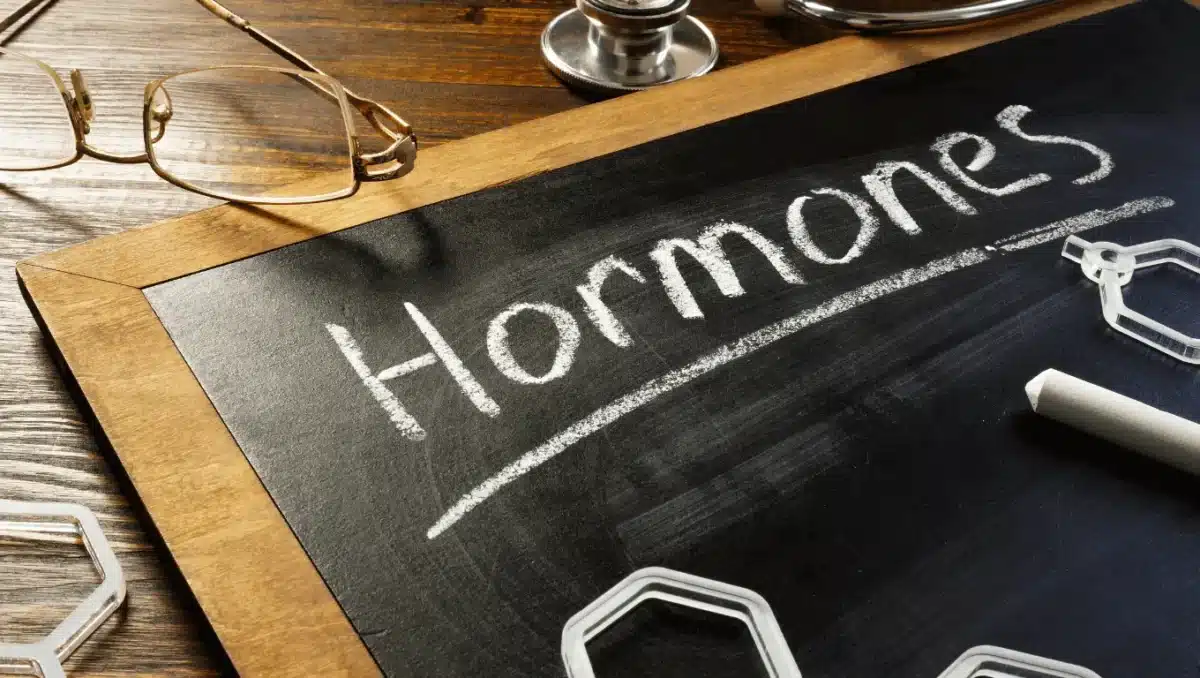7 Powerful Ways Growth Hormone Fasting Transforms Your Body
Did you know that your body’s production of growth hormone plummets by approximately 14% every decade after age 30? By reaching 60, you’re producing less than half the growth hormone you had in your twenties.
This dramatic decline affects everything from your ability to build muscle and burn fat to how well you sleep and recover from daily stress.
But here’s the remarkable discovery that’s revolutionizing how we approach anti-aging and metabolic health: strategic fasting can naturally boost your growth hormone levels by an astounding 1,300% or more.
This isn’t about expensive treatments or synthetic hormones, it’s about harnessing your body’s powerful mechanisms through the simple act of when you eat, rather than what you eat.
Growth hormone fasting represents one of the most accessible yet powerful tools for transforming your body composition, enhancing recovery, and potentially slowing the aging process.
Unlike restrictive diets or complicated supplement regimens, this approach works with your body’s natural rhythms to optimize hormone production.
In this comprehensive guide, you’ll discover the science behind why fasting triggers such dramatic increases in growth hormone, the seven transformative benefits you can expect, and the exact protocols that maximize these effects.
Whether you’re looking to lose stubborn body fat, build lean muscle, improve sleep quality, or simply feel more energetic and youthful, understanding growth hormone fasting could be the key to unlocking your body’s full potential.
What is Growth Hormone and Why Does It Matter?
Human growth hormone (HGH) is often called the “fountain of youth” hormone, and for good reason. This powerful protein hormone, produced by your pituitary gland, serves as your body’s master regulator for growth, repair, and regeneration throughout your entire life.
While many people associate growth hormone with childhood development, its importance doesn’t diminish with age. In adults, HGH continues to play critical roles in:
Muscle Growth and Repair: Growth hormone stimulates protein synthesis and helps maintain lean muscle mass. It’s essential for muscle recovery after exercise and prevents the age-related muscle loss known as sarcopenia.
Fat Metabolism: HGH is one of your body’s most potent fat-burning hormones. It promotes lipolysis, the breakdown of stored fat for energy, particularly targeting stubborn visceral fat around your midsection.
Bone Density Maintenance: Growth hormone stimulates bone formation and helps maintain bone mineral density, reducing the risk of osteoporosis and fractures as you age.
Cellular Regeneration: HGH promotes the repair and regeneration of cells throughout your body, from skin cells that keep you looking youthful to brain cells that maintain cognitive function.
Sleep Quality Enhancement: Growth hormone plays a crucial role in sleep architecture, particularly during deep sleep phases when most tissue repair occurs.
The problem is that growth hormone production follows a predictable decline throughout adulthood. After age 30, HGH levels drop by approximately 14% per decade.
This decline contributes to many of the changes we associate with aging: increased body fat, decreased muscle mass, reduced bone density, poor sleep quality, slower recovery, and diminished energy levels.
Traditional approaches to addressing low growth hormone have focused on expensive and potentially risky synthetic hormone replacement therapy.
However, research has revealed that our bodies are capable of producing significantly more growth hormone naturally when we create the right conditions, and fasting is one of the most powerful triggers we can control.
The Science Behind Growth Hormone and Fasting
The relationship between fasting and growth hormone production is one of the most well-documented phenomena in metabolic research. When you understand the mechanisms behind this connection, it becomes clear why growth hormone fasting is such a powerful tool for body transformation.
The primary driver of this relationship is the hormone ghrelin, often called the “hunger hormone.” As you extend the time between meals, ghrelin levels rise, and this increase directly stimulates growth hormone release from your pituitary gland.
This makes evolutionary sense, during periods of food scarcity, your body needs to preserve muscle mass and mobilize fat stores for energy, exactly what growth hormone helps accomplish.
Equally important is what happens to insulin during fasting. Insulin and growth hormone have an inverse relationship; when insulin levels are high, growth hormone production is suppressed.
This is why eating frequent meals throughout the day, especially those high in refined carbohydrates, can significantly blunt your natural growth hormone production. Conversely, the low insulin environment created by fasting allows growth hormone levels to soar.
Research studies have documented remarkable increases in growth hormone during various fasting protocols:
A landmark study published in the Journal of Clinical Investigation found that a 24-hour fast increased growth hormone levels by an average of 1,300% in women and 2,000% in men. Even shorter fasting periods show significant benefits. Research indicates that growth hormone levels begin rising within 12-16 hours of your last meal.
Intermittent fasting studies have shown more modest but still impressive increases. A study following participants on a 16:8 intermittent fasting protocol (eating within an 8-hour window) found average growth hormone increases of 300-500% compared to those eating conventional meal patterns.
The timing of this growth hormone release also matters. Much of the increase occurs during the latter part of your fasting period and continues into the early hours after you break your fast. This timing aligns perfectly with exercise and recovery periods, maximizing the anabolic (muscle-building) and lipolytic (fat-burning) effects.
Understanding this science reveals why the traditional advice to “eat small, frequent meals” might work against your body’s natural hormone optimization. The constant insulin stimulation from frequent eating creates an environment where growth hormone production remains chronically suppressed.
7 Powerful Benefits of Growth Hormone Fasting
1. Accelerated Fat Loss and Muscle Preservation
Perhaps the most sought-after benefit of growth hormone fasting is its profound effect on body composition. Growth hormone is one of your body’s most potent fat-burning hormones, and the dramatic increases triggered by fasting create an ideal environment for losing fat while preserving precious muscle mass.
HGH promotes fat loss through several mechanisms. It stimulates hormone-sensitive lipase, the enzyme responsible for breaking down stored fat (lipolysis).
This effect is particularly pronounced in visceral fat—the dangerous belly fat that accumulates around your organs and contributes to metabolic dysfunction. Studies show that higher growth hormone levels correlate with significant reductions in waist circumference and overall body fat percentage.
What makes growth hormone fasting particularly valuable is its muscle-preserving effects during caloric restriction. Traditional dieting often leads to muscle loss along with fat loss, which can slow your metabolism and make long-term weight maintenance difficult.
Growth hormone helps prevent this by promoting protein synthesis and reducing protein breakdown, allowing you to maintain lean muscle mass even while in a caloric deficit.
Research comparing intermittent fasting to continuous calorie restriction found that those using fasting protocols lost a higher percentage of fat while preserving more muscle mass. This leads to the lean, toned physique that many people struggle to achieve through conventional dieting methods.

2. Enhanced Muscle Growth and Recovery
For those interested in building muscle or improving athletic performance, growth hormone fasting offers significant advantages. The elevated HGH levels during and after fasting periods create an optimal environment for muscle protein synthesis, the process by which your body builds new muscle tissue.
Growth hormone enhances muscle growth through multiple pathways. It directly stimulates protein synthesis in muscle cells and promotes the production of insulin-like growth factor-1 (IGF-1), another powerful anabolic hormone. Additionally, HGH improves the uptake of amino acids into muscle cells, providing the building blocks necessary for muscle repair and growth.
The recovery benefits are equally impressive. Growth hormone accelerates the repair of exercise-induced muscle damage, reduces inflammation, and helps restore energy stores more quickly. Athletes and fitness enthusiasts using growth hormone fasting protocols often report faster recovery between workouts, reduced muscle soreness, and improved exercise performance.
Timing your training during or shortly after your fasting period can amplify these benefits. The combination of elevated growth hormone from fasting plus the additional HGH release triggered by exercise creates a synergistic effect that maximizes both fat loss and muscle building.
3. Anti-Aging and Cellular Repair
Growth hormone has earned its reputation as an anti-aging hormone through its powerful effects on cellular repair and regeneration. The increases in HGH from fasting can help slow many of the visible and invisible signs of aging.
At the cellular level, growth hormone stimulates autophagy, your body’s cellular cleanup process that removes damaged proteins and organelles. This cellular housekeeping is crucial for maintaining healthy, functioning cells and may help prevent age-related diseases.
When does autophagy start during fasting? Research suggests autophagy begins around 12-16 hours into a fast, coinciding with the rise in growth hormone levels.
The skin benefits of increased growth hormone are particularly noticeable. HGH stimulates collagen production, which helps maintain skin elasticity and reduces the appearance of wrinkles.
Many people practicing growth hormone fasting report improvements in skin texture, tone, and overall appearance within weeks of starting their protocol.
Growth hormone also promotes the regeneration of various tissues throughout your body, from liver cells to brain neurons. This regenerative capacity may help maintain cognitive function, improve wound healing, and support overall vitality as you age.

4. Improved Sleep Quality
The relationship between growth hormone and sleep is bidirectional; not only does good sleep promote growth hormone release, but adequate growth hormone levels are essential for quality sleep. This creates a positive feedback loop that can dramatically improve your sleep quality when you optimize HGH through fasting.
Growth hormone is primarily released during deep sleep phases, particularly during the first few hours of the night. When your baseline growth hormone levels are higher due to fasting, you tend to experience deeper, more restorative sleep.
This is because HGH helps regulate your circadian rhythm and promotes the slow-wave sleep that’s crucial for physical and mental recovery.
Many practitioners of growth hormone fasting report falling asleep more easily, staying asleep throughout the night, and waking up feeling more refreshed.
This improved sleep quality creates additional benefits, as better sleep supports healthy hormone production, including growth hormone, creating a virtuous cycle of improvement.
The connection between sleep and growth hormone also explains why sleep affects insulin sensitivity is so important. Poor sleep disrupts both growth hormone and insulin function, making it difficult to achieve optimal metabolic health.
5. Stronger Bones and Connective Tissues
Growth hormone plays a crucial role in maintaining bone density and strength throughout your life. The increases in HGH from fasting can help prevent osteoporosis and maintain strong, healthy bones as you age.
HGH stimulates osteoblasts, the cells responsible for building new bone tissue, while also promoting the production of IGF-1, which has additional bone-building effects. This dual action helps maintain bone mineral density and may even help reverse some age-related bone loss.
Beyond bones, growth hormone supports the health of connective tissues, including tendons, ligaments, and cartilage. This is particularly important for maintaining joint health and preventing injuries as you age. Many people notice improvements in joint comfort and mobility when following growth hormone fasting protocols.
The collagen-promoting effects of HGH also extend to blood vessels, helping maintain cardiovascular health. Stronger, more flexible blood vessels support better circulation and may contribute to cardiovascular disease prevention.

6. Enhanced Cognitive Function
The brain benefits of growth hormone are increasingly recognized as important for maintaining cognitive function throughout life. Growth hormone receptors are found throughout the brain, and HGH plays important roles in neuroplasticity, memory formation, and neuroprotection.
Studies suggest that higher growth hormone levels are associated with better memory, improved focus, and enhanced learning ability. The hormone appears to support the growth of new brain cells (neurogenesis) and the formation of new neural connections, which are crucial for maintaining cognitive flexibility and preventing age-related cognitive decline.
Many people practicing growth hormone fasting report experiencing improved mental clarity, better focus, and enhanced mood. This may be due to the combination of optimized growth hormone levels, improved sleep quality, and the metabolic benefits of fasting working together to support brain health.
The neuroprotective effects of growth hormone may also help defend against neurodegenerative diseases. While more research is needed, preliminary studies suggest that maintaining higher growth hormone levels throughout life may reduce the risk of conditions like Alzheimer’s disease and other forms of dementia.
7. Metabolic Health Optimization
Growth hormone fasting creates a cascade of metabolic improvements that extend far beyond fat loss. The elevated HGH levels help optimize your entire metabolic system, leading to better blood sugar control, improved insulin sensitivity, and enhanced metabolic flexibility.
One of the most significant metabolic benefits is improved insulin sensitivity. Growth hormone helps your cells respond more effectively to insulin, which means better blood sugar control and reduced risk of type 2 diabetes. This effect is amplified by the fasting periods themselves, which also improve insulin sensitivity through multiple mechanisms.
The combination of fasting and elevated growth hormone also enhances metabolic flexibility, your body’s ability to efficiently switch between burning glucose and fat for fuel. This flexibility is a hallmark of metabolic health and is associated with better energy levels, weight management, and disease prevention.
Research shows that people following intermittent fasting protocols experience improvements in various markers of metabolic health, including blood pressure, cholesterol levels, and inflammatory markers. While these benefits come from multiple aspects of fasting, the growth hormone increases play an important supporting role.
Optimal Fasting Protocols for Maximum Growth Hormone Release
Understanding the science behind growth hormone fasting is only the first step; implementing the right protocol is crucial for maximizing benefits while maintaining sustainability and safety.
Time-Restricted Eating Approaches
For most people, time-restricted eating provides an excellent entry point into growth hormone fasting. These protocols involve eating all your daily calories within a specific window and fasting for the remaining hours.
The 16:8 Method is the most popular and well-researched approach. You fast for 16 hours and eat within an 8-hour window. For example, you might eat between noon and 8 PM, then fast from 8 PM until noon the next day. Research shows this protocol can increase growth hormone levels by 300-500% compared to conventional eating patterns.
The 18:6 Protocol extends the fasting window to 18 hours with eating confined to 6 hours. This approach typically produces more dramatic growth hormone increases, often 500-800% above baseline. Many people find 18:6 sustainable long-term while providing more pronounced benefits than 16:8.
The 20:4 Method involves a 20-hour fast with a 4-hour eating window. This approach is more advanced and can produce growth hormone increases of 1000% or more. However, it requires careful attention to nutrient intake and may not be suitable for everyone.
Extended Fasting Protocols
For those seeking maximum growth hormone benefits, extended fasts beyond 24 hours can produce remarkable results, though they require more careful planning and medical supervision.
24-Hour Fasts performed once or twice per week can increase growth hormone levels by 1,300-2,000%. These fasts typically involve eating dinner one day, then not eating again until dinner the following day.
36-Hour Fasts can produce even more dramatic increases, with some studies showing growth hormone elevations of 3,000% or more. However, these extended fasts should be approached cautiously and may not be appropriate for everyone.
Weekly Extended Fasts might involve one longer fast (24-48 hours) per week combined with daily intermittent fasting. This approach can provide significant growth hormone benefits while maintaining sustainability.
Factors That Maximize HGH Release
Several strategies can enhance the growth hormone response to fasting:
Timing Your Last Meal: Stopping eating 3-4 hours before bedtime allows growth hormone levels to rise during sleep, when the majority of HGH is naturally released.
Exercise Timing: Combining fasted exercise with your fasting protocol can dramatically amplify growth hormone release. High-intensity exercise during a fasted state can increase HGH by an additional 300-500%.
Sleep Optimization: Since most growth hormone is released during deep sleep, ensuring quality sleep amplifies the benefits of fasting protocols.
Stress Management: Chronic stress and elevated cortisol can suppress growth hormone production. Incorporating stress reduction techniques enhances the HGH response to fasting.
What Breaks a Growth Hormone Fast
Understanding what interrupts the growth hormone response is crucial for protocol success:
Insulin-Spiking Foods and Drinks: Any significant caloric intake, particularly carbohydrates, will trigger insulin release and suppress growth hormone production.
The Artificial Sweetener Debate: While most artificial sweeteners don’t significantly impact insulin, some may trigger a minor growth hormone suppression. Individual responses vary, so monitoring your body’s reaction is important.
Acceptable Fasting Beverages: Water, black coffee, plain tea, and electrolyte supplements without calories generally don’t interfere with growth hormone production.
Exercise and Growth Hormone Fasting Synergy
Combining strategic exercise with your fasting protocol can dramatically amplify growth hormone benefits. Exercise itself is one of the most potent natural stimulators of HGH release, and when combined with fasting, the effects can be synergistic.
High-Intensity Interval Training (HIIT) produces the most significant acute increases in growth hormone. Sessions involving short bursts of intense exercise followed by brief recovery periods can increase HGH by 300-500%. When performed during a fasted state, these increases can be even more dramatic.
Resistance Training also powerfully stimulates growth hormone release, particularly when using compound movements that engage multiple muscle groups. The combination of mechanical stress and metabolic demand creates an ideal stimulus for HGH production.
Timing Your Workouts can maximize benefits. Many people find that exercising 12-16 hours into their fast, when growth hormone levels are naturally rising, produces the best results. This timing allows you to take advantage of elevated HGH for recovery while the hormone levels remain high.
Recovery Considerations become even more important when combining intense exercise with fasting. The elevated growth hormone levels help accelerate recovery, but ensuring adequate protein intake during your eating window and prioritizing sleep remain crucial.
Common Mistakes That Suppress Growth Hormone
Several common lifestyle factors can significantly blunt your body’s growth hormone response, undermining the benefits of your fasting protocol:
Late-night eating is one of the most detrimental habits for growth hormone production. Eating close to bedtime elevates insulin levels during the hours when growth hormone should be rising, severely suppressing HGH release.
Chronic Stress and Elevated Cortisol create hormonal conditions that inhibit growth hormone production. The stress hormone cortisol has a direct suppressive effect on HGH, which is why stress management is crucial for optimizing growth hormone fasting benefits.
Poor Sleep Habits undermine growth hormone production since the majority of HGH is released during deep sleep phases. How sleep disrupts hormones and affects weight loss explains the complex relationships between sleep quality and hormone optimization.
Overtraining can paradoxically suppress growth hormone despite exercise being a powerful HGH stimulator. Excessive training volume or intensity without adequate recovery can elevate cortisol and suppress growth hormone production.
Processed Food Consumption creates insulin resistance and chronic inflammation, both of which interfere with normal growth hormone function. Highly processed foods also tend to cause more dramatic insulin spikes that suppress HGH.
Alcohol Consumption significantly suppresses growth hormone release, particularly when consumed in the evening. Even moderate alcohol intake can reduce overnight growth hormone production by 70% or more.
Who Should and Shouldn’t Try Growth Hormone Fasting
While growth hormone fasting can provide remarkable benefits for many people, it’s not appropriate for everyone. Understanding who should approach this strategy with caution or avoid it entirely is crucial for safety.
Ideal Candidates for growth hormone fasting include healthy adults looking to improve body composition, enhance athletic performance, or optimize metabolic health.
People with insulin resistance, prediabetes, or metabolic syndrome may find particular benefit from the insulin sensitivity improvements that accompany growth hormone fasting.
Medical Conditions Requiring Caution include diabetes (especially if taking medication), eating disorders, thyroid disorders, and adrenal dysfunction. Anyone taking medications that affect blood sugar should consult with their healthcare provider before beginning any fasting protocol.
Age Considerations are important—while growth hormone fasting can benefit adults of all ages, older adults may need modified approaches and should work with healthcare providers to ensure safety.
Pregnancy and Breastfeeding are absolute contraindications for extended fasting protocols. The increased nutritional demands during these periods make fasting inappropriate and potentially harmful.
Eating Disorder History requires careful consideration, as fasting protocols might trigger unhealthy behaviors in susceptible individuals.
Measuring Your Progress
Tracking the right markers helps you assess whether your growth hormone fasting protocol is working effectively:
Body Composition Changes are often the most noticeable early indicators. Measurements of body fat percentage, muscle mass, and waist circumference typically show improvements within 4-8 weeks of consistent practice.
Sleep Quality Assessment can be tracked through sleep tracking devices or simple subjective measures. Improvements in sleep depth, reduced time to fall asleep, and feeling more refreshed upon waking are positive indicators.
Energy Level Improvements often occur within the first few weeks. Many people report more stable energy throughout the day and reduced afternoon energy crashes.
Physical Performance Markers such as strength, endurance, and recovery time can indicate successful growth hormone optimization. Faster recovery between workouts and improved exercise performance are positive signs.
Biomarkers that can be measured through blood tests include fasting glucose, insulin sensitivity markers, and inflammatory markers. Some specialized tests can measure IGF-1 levels, which correlate with growth hormone activity.
Practical Implementation Guide
Successfully implementing growth hormone fasting requires a structured approach that allows your body to adapt gradually while maximizing benefits.
Weeks 1-2: Getting Started. Begin with a 12:12 schedule (12 hours eating, 12 hours fasting) to allow your body to adapt. Gradually extend your fasting window by 1-2 hours every few days until you reach your target protocol. Focus on maintaining proper hydration and electrolyte balance during fasting periods.
Weeks 3-4: Optimization Phase Once you’ve adapted to your chosen fasting window, focus on optimizing factors that enhance growth hormone release. Pay attention to meal timing, sleep quality, and stress management. Begin incorporating fasted exercise if appropriate for your fitness level.
Long-Term Maintenance After the initial adaptation period, consistency becomes key. Most people find that maintaining their protocol 5-6 days per week provides excellent results while allowing flexibility for social situations and special occasions.
Troubleshooting Common Issues includes addressing initial fatigue (often resolves within 1-2 weeks), managing hunger (typically decreases as you adapt), and adjusting protocols based on your body’s response.
Meal Timing Strategies should focus on eating nutrient-dense, whole foods during your eating window. The macronutrient effect on insulin levels guides food choices that support stable blood sugar and optimal hormone function.
Natural Ways to Support Growth Hormone Production
Beyond fasting, several lifestyle strategies can enhance your body’s natural growth hormone production:
Sleep Optimization Techniques are perhaps the most important complement to growth hormone fasting. Maintaining a consistent sleep schedule, creating a dark sleeping environment, and avoiding blue light before bed all support optimal HGH release during sleep.
Stress Reduction Methods, such as meditation, yoga, or deep breathing exercises, help maintain the low-cortisol environment necessary for optimal growth hormone production.
Supportive Nutrients include arginine, ornithine, and GABA, which may enhance growth hormone release. However, whole food sources of these nutrients are preferable to supplements.
Lifestyle Factors such as maintaining a healthy weight, avoiding excess sugar, and staying physically active all support healthy growth hormone levels throughout life.
Conclusion
Growth hormone fasting represents one of the most powerful and accessible strategies for optimizing your body’s natural hormone production. The ability to increase growth hormone levels by 300-2000% through strategic meal timing offers unprecedented opportunities for body transformation, performance enhancement, and healthy aging.
The seven benefits we’ve explored—accelerated fat loss, enhanced muscle growth, anti-aging effects, improved sleep, stronger bones, better cognitive function, and optimized metabolism—demonstrate why growth hormone fasting has gained such attention from researchers and health enthusiasts alike.
What makes this approach particularly appealing is its simplicity and sustainability. Unlike complex supplement regimens or expensive treatments, growth hormone fasting requires only the discipline to control when you eat, not necessarily what you eat. This accessibility makes it a viable long-term strategy for most people.
Remember that like any significant lifestyle change, growth hormone fasting should be approached thoughtfully and systematically. Start with shorter fasting windows, pay attention to your body’s responses, and consider working with a healthcare provider if you have underlying health conditions.
The relationship between what happens to insulin levels during intermittent fasting and growth hormone optimization shows how these metabolic improvements work synergistically to transform your health from multiple angles.
As you embark on your growth hormone fasting journey, remember that consistency matters more than perfection. The cumulative effects of regularly optimizing your growth hormone levels through strategic fasting can produce remarkable changes in how you look, feel, and perform.
Your body possesses an incredible capacity for renewal and optimization, growth hormone fasting simply provides the key to unlock these natural processes. Start where you are, be patient with the process, and prepare to discover what your body is truly capable of achieving.
Frequently Asked Questions
How quickly does growth hormone increase during fasting?
Growth hormone levels begin rising within 12-16 hours of your last meal, with peak levels typically occurring 18-24 hours into a fast. However, even shorter 16-hour fasts can produce significant increases of 300-500% above baseline levels.
Can I drink coffee during a growth hormone fast?
Yes, black coffee is generally acceptable during growth hormone fasting and may enhance the benefits. Coffee contains compounds that can stimulate additional growth hormone release and help suppress appetite. Avoid adding milk, cream, or sweeteners that might trigger insulin release.
What’s the optimal fasting duration for HGH release?
For most people, 16-18 hour fasts provide excellent growth hormone benefits while remaining sustainable long-term. More extended fasts (24-48 hours) can produce more dramatic increases but should be used less frequently and with greater caution.
Will growth hormone fasting help me build muscle?
Yes, the elevated growth hormone levels from fasting create an optimal environment for muscle growth and preservation. When combined with appropriate resistance training and adequate protein intake during eating windows, growth hormone fasting can significantly enhance muscle building and recovery.
Are there any side effects of increased growth hormone?
When growth hormone increases naturally through fasting, side effects are rare and typically mild. Some people may experience initial fatigue or hunger during the adaptation period, but these usually resolve within 1-2 weeks. The natural increases from fasting are self-regulating and don’t produce the side effects associated with synthetic growth hormone.
How does age affect growth hormone response to fasting?
While growth hormone production naturally declines with age, fasting remains effective at increasing HGH levels in older adults. In fact, the relative increases may be even more significant in older individuals since their baseline levels are lower. However, older adults should approach fasting more gradually and may benefit from medical supervision.







